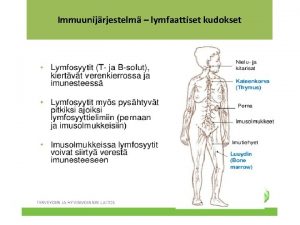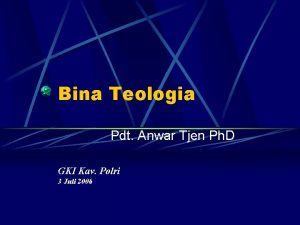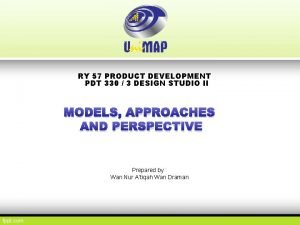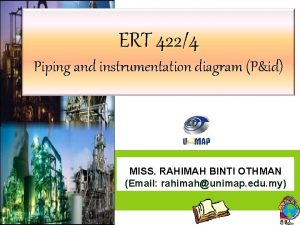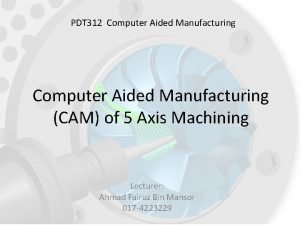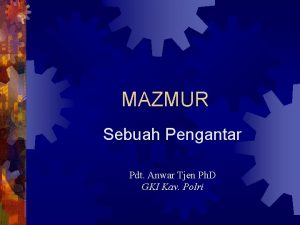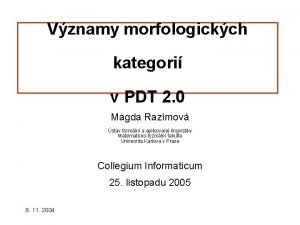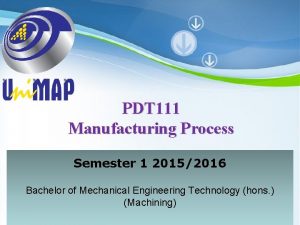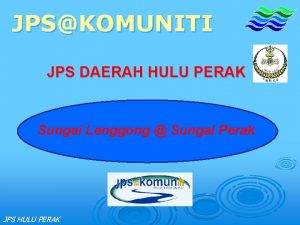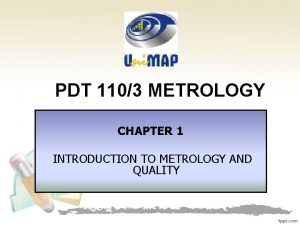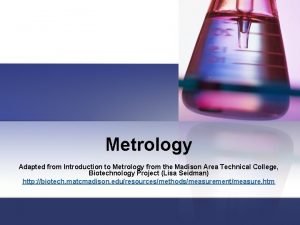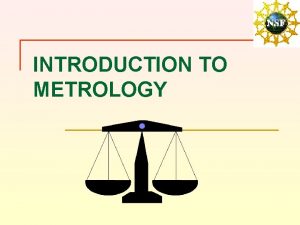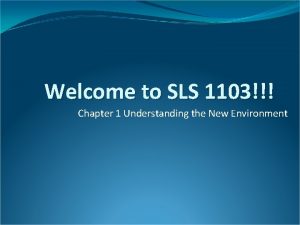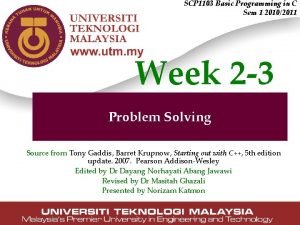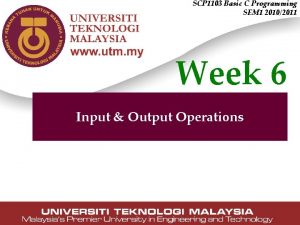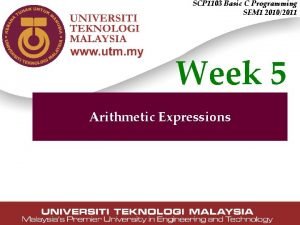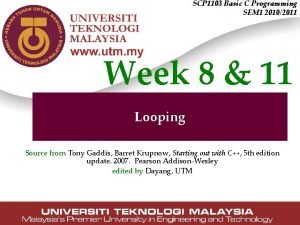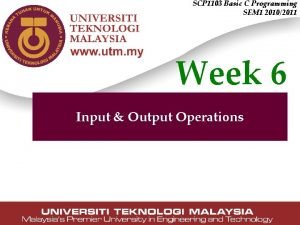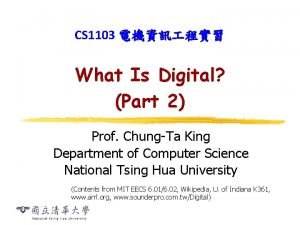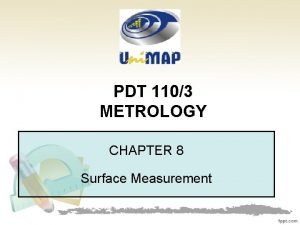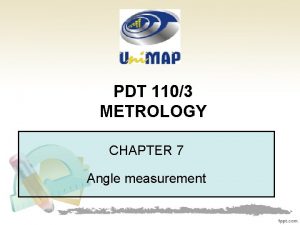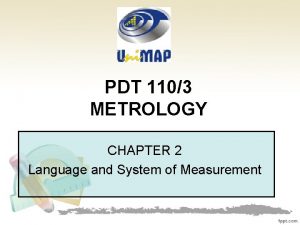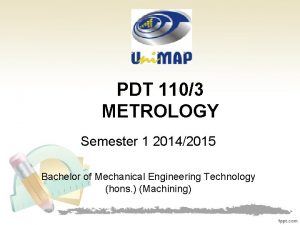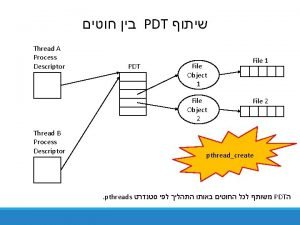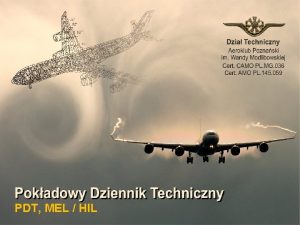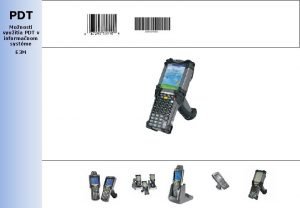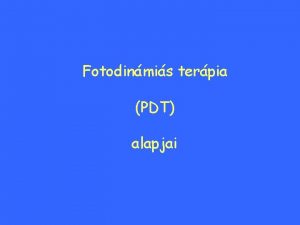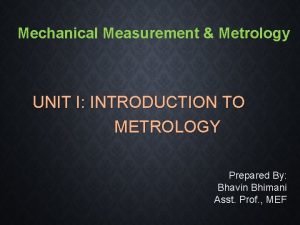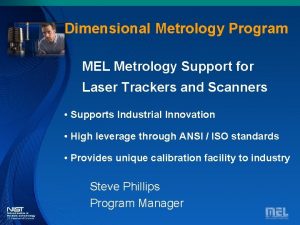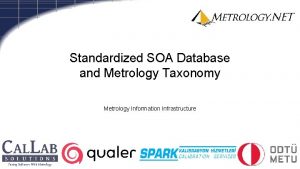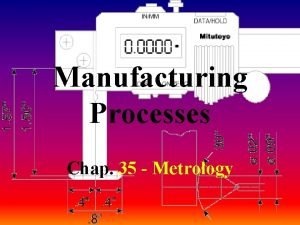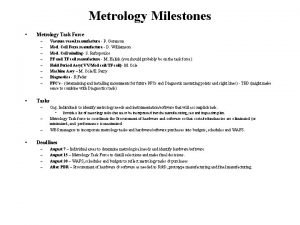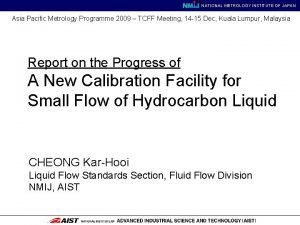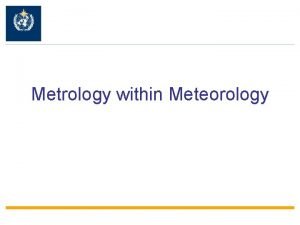PDT 1103 METROLOGY CHAPTER 1 INTRODUCTION TO METROLOGY


























- Slides: 26

PDT 110/3 METROLOGY CHAPTER 1 INTRODUCTION TO METROLOGY AND QUALITY

OUTLINE • OVERVIEW • DEFINITION – Metrology – Measurement – Quality • THE USE OF MEASUREMENT • MEASURE OF QUALITY – Inspection – What to inspect? – Why we need quality and inspection • ERROR IN MEASUREMENT • METROLOGY AND QUALITY CONTROL

OVERVIEW • From economic standpoint: – The measurement we make with accuracy and precision will reduce the waste of materials, and will further contribute to the production of high quality items – A simple error in measurement when setting up a machining center could cost of company a contract, loss of work etc.

Overview • In our modern industrial society, we need to be able to produce manufactured goods that are made to exacting standards, able to be repaired with interchanged parts and be consistent in their production so that costs can be reduced.

Overview • To explain the importance of measurement, Lord Kelvin said “I often say that when you can measure what you are speaking about and express it in numbers, you know something about it; but when you cannot measure it, when you cannot express it in numbers, your knowledge is of a meager and unsatisfactory kind. It may be the beginning of knowledge but you have scarcely in your thought advanced to the stage of science. ” Measurement is defined as the set of operations having the objective of determining the value of a quantity.

DEFINITION • Metrology – Metrology comes from Greek word ‘metron’ (measure) and ‘logo’ (study of). – Science of measurement – Metrology includes all theoretical and practical aspects of measurement

DEFINITION (cont’) • Measurement – Language of science – Use to communicate about size, quantity, position, condition and time – a procedure in which an unknown quantity compared to a known standard, using an accepted and consistent system of units

DEFINITION (cont’) • Dimensional measurement – For determining the linear and angular magnitudes of technical parts or of their specific features – These magnitudes are measured and expressed by standard units of length and angle – The basic purpose of dimensional measurements in production is to assure and to verify the agreement of the product with the specifications of the design.

DEFINITION (cont’) Quality i. • Crosby Quality is conformance to requirements or specifications (to manage quality adequately, we must able to measure it) ii. • Juran Quality is fitness for use (emphasis on the customer aspect of quality) iii. • ISO 9000 -2000 [American Society for Quality (2000)] Degree of which a set of inherent characteristics fulfils requirements Note: a. degree –quality can be used with adjectives such as poor, good, or excellent. b. Inherent – existing in something, especially as a permanent characteristic c. Requirement- need or expectation that is stated

THE USES OF MEASUREMENT To make things To control manufacture For progress


SI: The International System of Units Seven base units: Lots of derived units: Length: meter (m) Area: m 2 Mass: kilogram (kg) Speed: m/s Time: second (s) Electric current: ampere (A) Force: 1 newton = 1 kg·m/s 2 Voltage: 1 volt = 1 m 2·kg/s 3·A Frequency: 1 hertz = 1/s Thermodynamic temperature: kelvin (K) Power: 1 watt = 1 kg·m 2/s 3 Amount of substance: mole (mol) Electric Charge: 1 C = 1 A·s Luminous intensity: candela (cd)


MEASURE OF QUALITY

Inspection • An inspection is, most generally, an organized examination or formal evaluation exercise. • It involves the measurements, tests, and gauges applied to certain characteristics in regard to an object or activity. • The results are usually compared to specified requirements and standards for determining whether the item or activity is in line with these targets

What to inspect? • Inspection specific to PRODUCTS § Electronic parts (circuits, chips, etc. ) § Machine elements (engines, brakes, gears, etc. ) § Heat and thermodynamic components (engines, fuel injectors § Medical and Bio-related products (implants, dental devices, surgical parts, etc. ) • Inspection specific to PROCESSES § Chip removal processes (turning, milling, drilling, etc. ) § Chipless manufacturing (casting, molding, forging, etc. ) § Non-traditional methods (EDM, ECM, ultrasonics, etc. )

Why We Need for Quality and Inspection? ? • Quality is a very important aspect of manufacturing. • Needed for interchangeable manufacturing. • Basic concept of standardization and mass production • Components of a product must fit together, assemble properly and be replaceable • Quality should be built into a product. • Prevention of defects is a major goal

Error in measurement • The error in measurement is the difference between the measured value and the true value of the measured dimension. Error may be absolute or relative. Error in Measurement = Measured Value – True Value • The actual value (True value) is a theoretical size of dimension free from any error of measurement which helps to examine the errors in a measurement system that lead to uncertainties.

Static Error • These are the result of physical nature of the various components of a measuring system. • Static error may occur due to existence of either characteristic errors or reading errors or environmental errors. • Included in Static Error are Reading Error and Alignment Error.

a) Reading error

b) Alignment error

Loading Error • The part to be measured is located on the surface table (datum for comparison with standards). • If datum surface is not flat or if foreign matter like dirt, chips, etc. , get entrapped between datum and workpiece, then an error will be introduced while taking readings.

Loading error

Loading error

METROLOGY & QUALITY CONTROL • Certification to ISO 9000 standards has become a primary requirement for both manufacturing and service oriented organization • Calibration and control of test, measurement and inspection equipment is one of the more important requirements given in standard Requirement of ISO 9001: 2000 • Metrology, the science of measurement, plays an important roles in checking if specifications are met, and is needed to develop experimental data for analyzing a process • The quality of goods and services offered is highly dependent on reliable measurement.

References • C. l. Dotson, Fundamentals of Dimensional Metrology, Thomson Delmar Learning, 2006 • Anand K Bewoor, Vinay A kulkarni, Metrology and Measurement, Mc. Graw-Hill, 2009 • A. T. Bozdana, PP, Engineering Metrology and Quality Control, Mechanical Engineering University of Gaziantep • Analysis of Material Removal • G. M. S de Silva, Basic Metrology for ISO 9000 certification, Butterworth Heinemann, 2002
 Khotbah tentang dorkas
Khotbah tentang dorkas Prorphyrin
Prorphyrin Rotavirusripuli aikuisella
Rotavirusripuli aikuisella Product data template
Product data template Anwar tjen
Anwar tjen Pdt product development
Pdt product development P&id lic
P&id lic Aga pdt
Aga pdt Pdt manufacturing
Pdt manufacturing 2 pdt
2 pdt Pdt anwar tjen
Pdt anwar tjen 2 pdt
2 pdt Contchap
Contchap Pdt alex
Pdt alex Proverbios 30 pdt
Proverbios 30 pdt Hulu perak map
Hulu perak map Introduction to metrology
Introduction to metrology What is metrology
What is metrology Introduction to metrology
Introduction to metrology Sls 1103
Sls 1103 Scp programming
Scp programming Scp-1103
Scp-1103 Scp-1103
Scp-1103 Scp 1103
Scp 1103 Scp-1103
Scp-1103 Cs 1103
Cs 1103 Scp 1103
Scp 1103


